Nuclear era. Part 5
France
Many have already forgotten that before the Second World War, the French were leading in the field of research of radioactive substances. Do not be occupied France, this country had a real chance to create an atomic bomb first. At least, then all the conditions existed for this: the raw material, scientific, technological and financial base. In France, there was a well-equipped laboratory at the College de France, where, with generous public funding, a significant amount of work was done on nuclear physics and the phenomenon of radioactivity.
Being well-informed about the prospects for nuclear fission, the French government bought Xenumex years ahead of most Belgian Congo stockpiles in the Belgian Congo, which accounted for more than half of all uranium mined in the world at that time. Now it is not customary to recall this, but it was this uranium ore that later served as raw material for the creation of the first American atomic bombs. In the 30 year, shortly before the fall of France, uranium on two transport ships was shipped to America.
In the post-war period, until the beginning of the 50-s in France, there was no serious work in the field of nuclear physics of an applied nature. The situation changed in 1952, when, after the adoption of a plan for the development of nuclear energy, a significant budget allocation was made for research. But talk of creating a nuclear weapons not yet. France as an ally of the United States at that time relied entirely on American security guarantees. In parallel, the French conducted research in the framework of a joint program for the development of nuclear energy with Italy and Germany.
However, after Charles de Gaulle came to power again, a lot has changed. Seeing how European countries are increasingly becoming hostages of American politics, not wanting France to become involved in a conflict with the USSR, the French president staked on the development of its own nuclear forces beyond the control of the United States. In June 1958, at a meeting of the National Defense Council, Charles de Gaulle announced the launch of a national nuclear weapons program.
By that time, plutonium production had already been set up in France, and the president had de facto legalized the nuclear weapons project. The first G-1 reactor that produces plutonium in the city of Marcoult began operating the 1956 year, and two more were added to it in 1958. In the same year, 1958, the radiochemical plant UP1 in Markula received the first batch of plutonium suitable for the creation of a nuclear charge.
In parallel with the accumulation of fissile materials, work began on the creation of a nuclear test site and a research center in Algeria. For two years, near the oasis Reggan the Sahara Military Experiment Center was erected with a town of 10 thousand inhabitants. The cost of construction of the landfill, research laboratories and residential town cost a round sum - 100 billion francs.
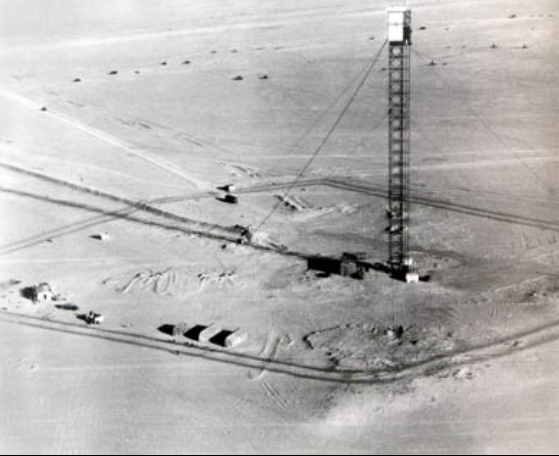
February 13 The 1960 of the year at the test site in the Sahara desert passed the first French nuclear test under the code “Blue Jerboa”, the power of the device exploded on a metal tower was within 70 qt. This test made France the fourth member of the unofficial "nuclear club", which previously included: the United States, the Soviet Union and the United Kingdom.
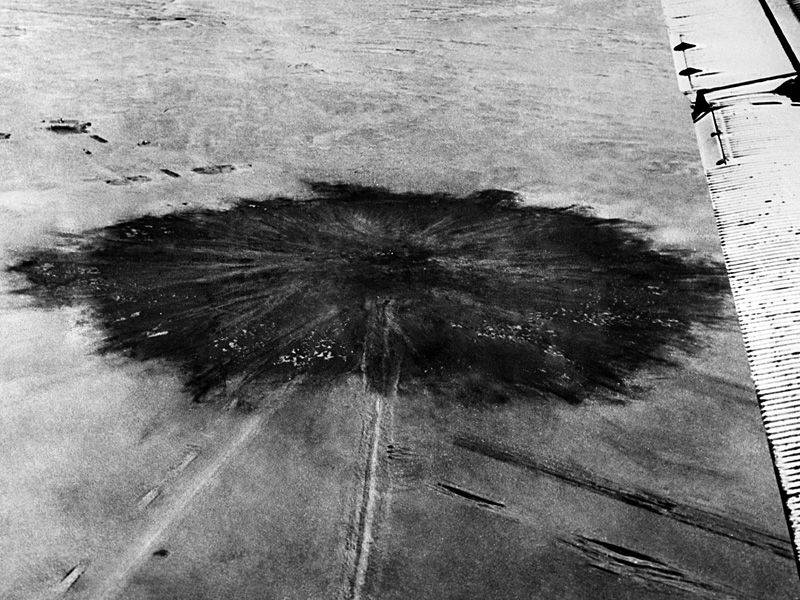
Before the start of 1961, three more nuclear explosive devices were tested at the test site in the Sahara. However, further nuclear tests in the Oasis Reggan area were hampered by the exacerbated military-political situation in Algeria. The rebels launched an offensive into the area and one nuclear weapon prepared for testing had to be undermined with an incomplete division cycle. In fact, the plutonium nucleus was sprayed on the ground by the explosion of ordinary explosives.
Radioactive clouds formed after atmospheric nuclear explosions at the Reggan site, spread across almost all of North, West and Central Africa, also affecting the south of Europe. Radioactive fallout fell not only in Algeria, but also Morocco, Mali, Mauritania, Nigeria and Ghana.
Under the pressure of the Algerian national-liberation armed formations, the French had to hastily leave the Reggan nuclear test site, leaving the residential town and much of the scientific and technical equipment. There were no decontamination measures after the evacuation of French personnel at the site. Vast territories contaminated with radionuclides were left unguarded and fenced.
One of the conditions for the acquisition of independence of Algeria was a secret agreement between the French and Algerian leadership, according to which the French nuclear tests on Algerian territory were continued. To this end, the In-Ecker test complex was erected on the rocky Hoggar Plateau in the southern part of the country. In the area for laying test galleries in the depths of the granite mountain Taurirt-Tan-Afella was transferred mountain-mining and construction equipment.
Up to the 1966 of the year, 13 underground nuclear tests were carried out in the depths of Taurirt-Tan-Afella. Part of the explosions was emergency and was accompanied by significant releases of radioactive substances. The test, codenamed “Beryl,” conducted by 1 in May of 1962, was best known in this respect. Then, due to an error in calculating the power of an underground explosion, a stream of radioactive lava over a length of more than 200 meters was released from the adit. What led to severe contamination of the area with radiation and the urgent evacuation of more than 2000 people, some of them received serious radiation doses. The slope of the mountain where the emergency explosion occurred still remains highly radioactive. The IAEA experts, who visited this place in 2007, recorded that the radiation background of the rocks ejected by the explosion was up to 10, miliber per hour.
The first practical model of French nuclear munitions was adopted in 1962. aviation 11-kt AN-60 bomb with plutonium nuclear charge Seven years after the first nuclear test, France had 36 atomic bombs.
This fact caused a very sharp reaction in the United States. The American leadership feared the economic and military-political strengthening of France and the emergence of a potentially strong geopolitical rival. The presence of nuclear weapons among recalcitrant French was aggravated by the fact that in 1966, at the initiative of de Gaulle, France withdrew from the military structure of NATO, remaining only a member of the political structures of the alliance. The headquarters of the organization was transferred from Paris to Brussels.
In contrast to Great Britain, at the first stage, France did not receive assistance from the United States when creating national nuclear weapons. On the contrary, the Americans hampered the French in acquiring CDC 6600 supercomputers. This computer was required for the calculations in the development of French thermonuclear weapons. France managed to circumvent the export ban, the supercomputer still managed to get through a fake commercial firm.
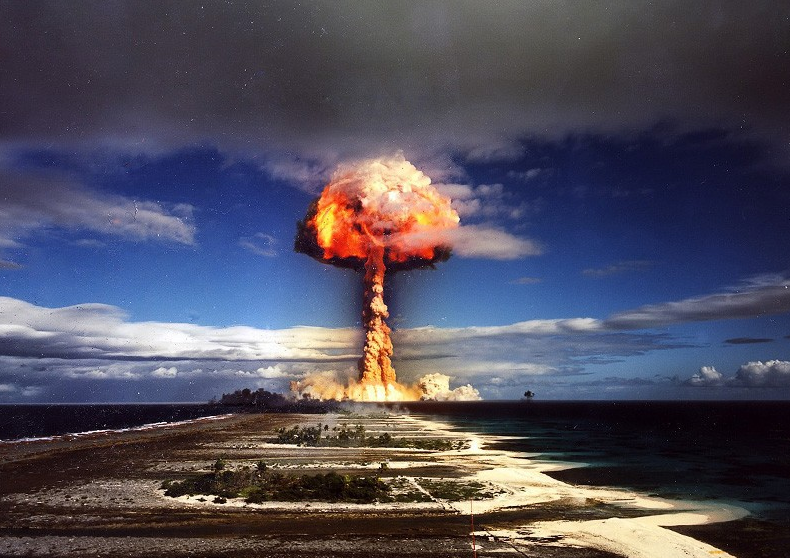
After leaving Algeria, France continued nuclear tests on the atolls of Mururoa and Fangatauf in French Polynesia. From 1966 to 1996, the year of the two atolls thundered 192 nuclear explosions. At Fangatauf, 5 atmospheric and 10 underground explosions were carried out. During the test in September 1966, there was a strong contamination of the atoll. Then the nuclear charge was blown up at a shallow depth and the explosion products were thrown to the surface. After the explosion, the atoll was decontaminated.
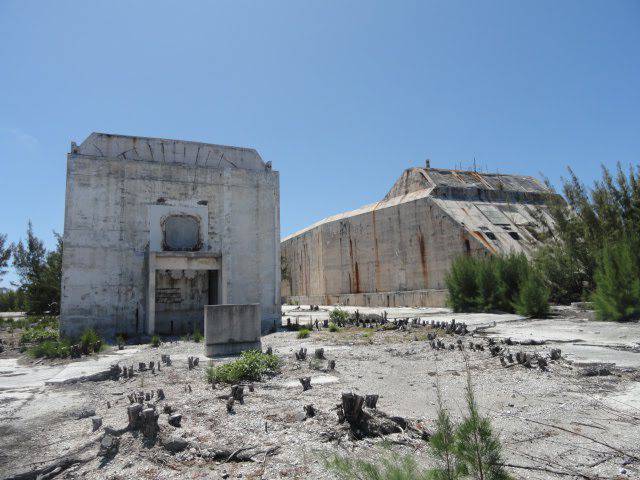
As a result of underground nuclear explosions, volcanic activity has intensified on the atoll of Mururoa. After testing, deep cracks appeared around the mines, through which radioactive water seeps. A zone of cracks with a diameter of 200 — 500 m was formed next to each explosive cavity. The explosions carried out in wells on an area of 15 km² led to the formation of vast underground cavities filled with radioactive water. Due to the fact that some test wells were located close to each other, they were interconnected. After another test, when the explosion occurred at a shallow depth, a crack was formed with a width of 0,5 m and a length of several kilometers. As a result, there appeared a real danger of a split of the atoll and large-scale radiation pollution of ocean waters. Until now, this area is closed to independent environmental inspections, and France carefully conceals the damage done to the nature of this region. According to independent experts in the field of nuclear safety, on the atolls of Mururoa and Fangatauf, about 100 kg of plutonium was scattered during the tests. A total of 1960 to 1996 years in the Sahara and on the islands of French Polynesia carried out 210 atmospheric and underground nuclear tests.
The foundations of the French nuclear strategy took place in the second half of 60's and until the collapse of the Warsaw Pact, it was not seriously revised. The French defense doctrine provided for "deterring the strong against the weak," which meant causing unacceptable damage to any aggressor. And also “containment in all azimuths” - this meant the absence of a clearly identified potential adversary. In reality, the Warsaw Pact and the Soviet Union were considered as the main object of deterrence.
In the French nuclear doctrine, there was always an element of uncertainty about the moment of use of a nuclear weapon and how much it would be used. That is, until recently, it was not clear: if it was a global strike with all the available nuclear warheads, it would end up with a demonstration explosion in a relatively deserted area in order to show the enemy the seriousness of his intentions and avoid retaliatory strikes. According to French strategists, such uncertainty should imply flexibility in nuclear planning and keep a potential adversary in the dark, increasing its risk level and increasing its deterrent effect.
The creation of French nuclear forces was carried out on the basis of the long-term plan "Kaelkansh-1". According to this plan, during the 25 years, the creation of a triad of French nuclear forces was envisaged. The strategic nuclear forces were to consist of the aviation, ground and sea components.
The first French strategic carriers were Mirage IVA bombers with a combat radius of action without refueling in the air 1240 km. According to its flight characteristics, this aircraft was more suitable for performing tactical tasks, but taking into account European realities, it could well perform strategic ones.
The bombers were dispersed at nine air bases and began to carry out combat duty in 1965 year. The X-NUMX atomic bombs AN-40 were originally intended for them. In total for the aviation component of the French nuclear forces built 11 "Mirage IVA". In the period from 66 to 1983, the 1987 aircraft year was upgraded to the Mirage IVP level. At the beginning of the 18-x bombers re-equipped with a more advanced and safe bomb AN-70 with a plutonium nuclear charge power 22 CT.
The upgraded Mirage IV bomber could carry an ASMP supersonic cruise missile with a launch range of - 250 km. The ASMP supersonic cruise missile with a kerosene ramjet, after launching from a carrier aircraft, accelerates to speeds above 3 M. The rocket was equipped with a nuclear warhead of the type TN-80 or TN-81 with a power up to 300 kt.
At the beginning of 70, in the south of France, on the territory of Saint-Cristol airbase, the deployment of S-2 medium-range solid-fuel ballistic missiles into secured silo launchers began. The first nine silos with the S-2 MRBR took up combat duty in the summer of 1971. The first French MRBD could hit targets with a 120 CT monoblock warhead, the QUO was within 1 km.
In terms of its characteristics, the medium-range S-2 rocket did not quite suit the French military, and the initial deployment plan was substantially revised. The construction of the positions for the last nine MRBM S-2 has been canceled. With the savings, they decided to create a rocket with improved range and accuracy characteristics. In addition, the new rocket was to be equipped with a complex of means for overcoming missile defense and a powerful megaton class warhead.
In the second half of 1980, S-3 MRS began to be put on combat duty. They replaced the S-2 missiles in the launch shafts. At the end of 1982, new missiles were installed in 18 silos. At the end of 1981, the upgraded S-3D rocket entered service. MRSD S-3 was a deep upgrade of S-2. The flight range of the S-3 increased to 3700 km, and the KVO decreased to 700 m. It took less time to launch the new missile and it carried a new thermonuclear 1,2 Mt warhead and a means of overcoming missile defense.
In the interests of the ground forces for launching nuclear strikes at defense centers, headquarters, airfields and places of concentration of enemy reserves in the late 60s, the Pluton tactical missile system with a launch range of 120 km was developed. Launchers mounted on a medium chassis tank AMX-30.
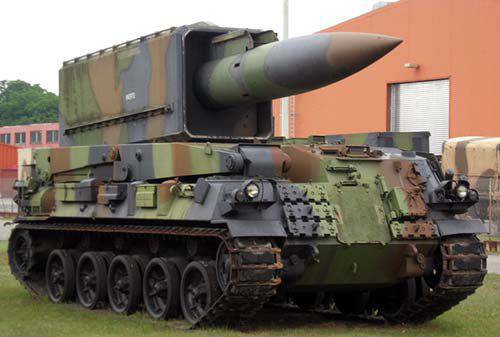
At the beginning of the 60-s, Great Britain received Lafayette-type SSBN documentation from the United States, while France itself had to design a strategic submarine-carrying submarine from scratch. The process of creating French SSBNs, and especially reactors for them, was very hard. However, the French coped with this task, and in 1971, the first Redubel SSBN entered the Navy, the head ship in a series of five boats. Already in January, 1972, she first went on combat patrols. On board the "Redtab" was 16 SLBM M1 with a launch range of 3000 km. The M1 missiles were equipped with a 0,5 MT unitary thermonuclear warhead.
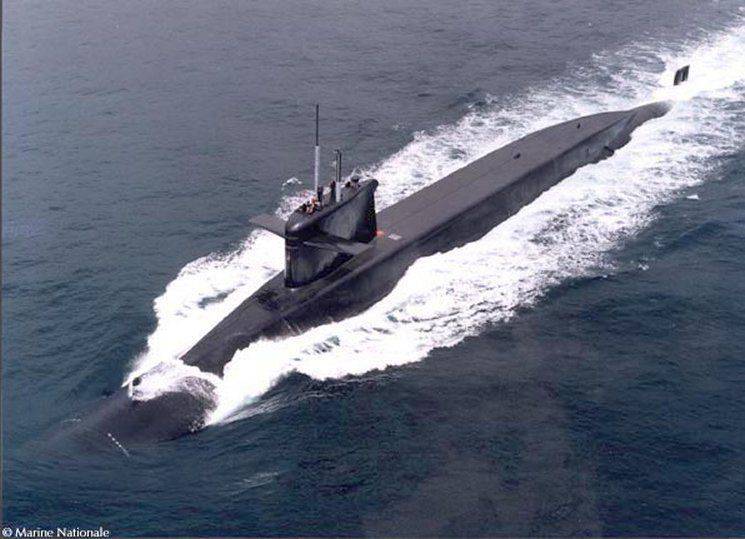
In the construction program of the French nuclear forces, priority was given to the maritime component, as the most secretive and tenacious. In the 80-s, five SSBNs carrying a total of 80 SLBMs carried combat duty as part of the French naval strategic nuclear forces. Even taking into account the fact that the French submarines were inferior in terms of the secrecy and range of missile use to the American and Soviet submarine rocket carriers, the very fact of creating and setting up combat patrols of nuclear submarines with ballistic missiles for France was a great achievement. The French boats were used very intensively: on the combat patrol, as a rule, there were two boats, at least one more was in constant readiness to sail.
In the course of regular overhauls, at the end of 80's, four boats, except for the Redoubt, underwent modernization. French SSBNs received a new M4 SLBM missile system with a launch range of 5000 km. The new rocket carried six warheads with a power of 150 CT each. The headboat Redoubt was taken out of service in 1991, and after cutting the reactor compartment it was installed on the coast in the port of Cherbourg as a ship-museum. The last boats of this type were withdrawn from service in the French Navy in 2008.
In 1985, the number of SSBNs in the French Navy was increased to six. The new boat "Eflexibl" was built on an improved project and armed with a modernized SLBM M-4A. Thanks to the reinforced hull, the Eflexible SSBN could dive to a depth of up to 300 meters. On this boat, the interval for replacing nuclear fuel in the reactor core was significantly increased.
In the 80 of the last century, a full-fledged nuclear triad was finally formed in France. At that time, French strategic nuclear forces reached the peak of their power. The number of nuclear warheads deployed on strategic carriers exceeded 300 units. Of course, the French strategic nuclear forces in terms of the number of warheads and the range of ballistic missile launch could not be compared with the Soviet and American strategic nuclear forces, but even three hundred nuclear charges were quite enough to curb any aggressor.
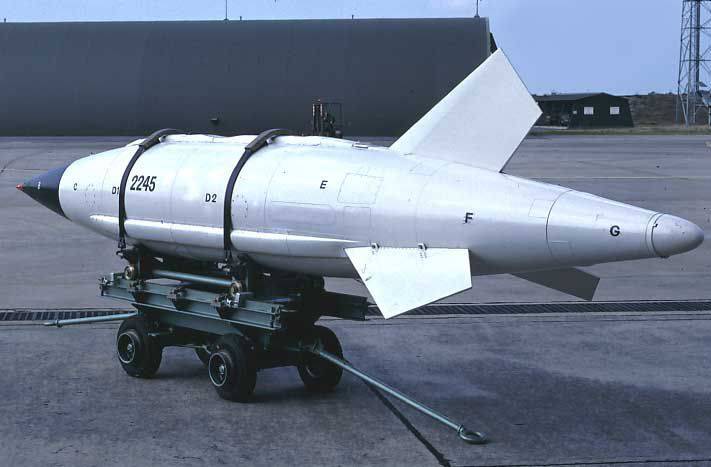
In 1973, the atomic bomb AN-52 with a power of 15 CT entered service for tactical and deck-based aircraft. This bomb was outwardly very similar to a suspended aircraft fuel tank. Aircrafts of tactical aviation of the Air Force (“Jaguar” and “Mirage IIIE”) and carrier-based naval forces (“Super Etandard”) became carriers of AN-52.
After adopting the Mirage 1984 fighter-bomber in 2000, the question arose of creating a modification capable of carrying nuclear weapons based on it, since it was clear that the obsolete Mirage IV needed to be replaced. Simultaneously with the creation of the "nuclear option" - "Mirage 2000N", for it was carried out the adaptation of the ASMP supersonic air-launched cruise missiles. At the end of the 1988 of the year, the Mirage 2000N with the ASMP CD became part of the French nuclear forces.
In addition to the Mirage, carriers of the ASMP cruise missiles with a nuclear warhead were the carrier bombers Super Etandar, the first sets of missiles for these aircraft were delivered in June 1989 of the year. Thus, French naval aviation gained the ability to deliver nuclear strikes without entering the air defense zone, which significantly increased the likelihood of a combat mission.
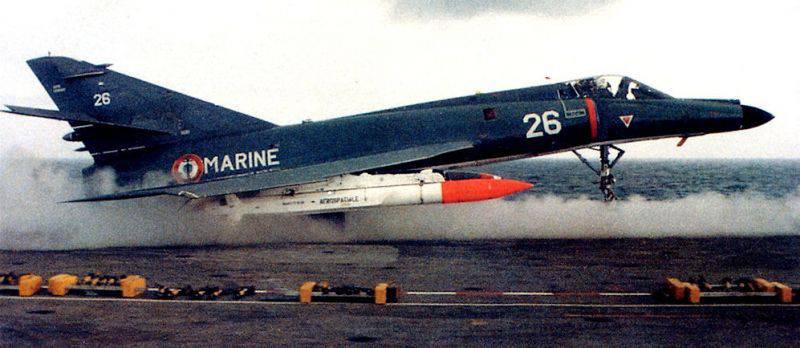
As the French top military and political leadership believed, the main role of the MiNG 2000N and Super Etandar, equipped with cruise missiles with nuclear warheads, was to deliver demonstration strikes and the “last warning” of the aggressor to France’s massive use of strategic nuclear forces. In the event that it is impossible to repel aggression by conventional means, at first it was assumed that tactical nuclear charges would be used against the advancing forces of the enemy.
It was assumed that in the event of aggression by the Warsaw Pact countries and the inability to repel it with conventional means, the use of tactical nuclear weapons against the advancing enemy forces would demonstrate the determination of France to defend itself by all means. Then, if it did not bring the proper result, it was supposed to launch a massive nuclear strike with all available means at the enemy's cities. The nuclear doctrine of France provided an opportunity for the selective use of various types of nuclear weapons, including elements of the concept of “flexible response”.
The end of the Cold War, the liquidation of the Eastern Bloc and the collapse of the USSR led to a substantial revision of plans for the development of French nuclear forces. In order to save, it was decided to abandon the terrestrial nuclear component. Stopped work on the creation of new MRSD S-4 silo-based. In 1998, the existing missile mines on the Albion plateau were dismantled.
There was also a rejection of the production and deployment of the Ades missile operational-tactical complex with a firing range of up to 480 km, which was to replace the outdated Pluton in the ground forces. Before 1993, the French industry managed to build 30 missiles and 15 mobile launchers.
In the spring of 1997, the submarine carrier of the new generation Triumfan with the 16 SLBM M-45 entered the French Navy, which significantly increased the combat capabilities of the naval component of the strategic nuclear forces. The range of launching M-45 rockets with separable warheads of individual guidance increased to 5300 km, while the QUO decreased by 2 times. This allowed to significantly expand the number and range of potential targets. When developing a new generation of SSBNs, great importance was attached to the secrecy and acoustic reconnaissance equipment in order to reduce vulnerability from antisubmarine defense weapons.
Reducing the degree of opposition led to a reduction in the number of built boats.
Instead of six, the French decided to build four new-generation SSBNs, also saving on missiles. Instead of the M5 SLBMs developed from scratch, the M45 missile, which was an improved version of the M4, was put into service.
The last fourth French boat of this Terribl series is armed with sixteen new M51.1 SLBMs with a launch range of up to 9000 km. In terms of their combat capabilities and weight and size characteristics, the French rocket is comparable to the US Trident-2 (D5) system.
In 2013, the decision was made to retrofit the first three boats with the advanced M51.2 missiles during the overhauls of the first three boats. In 2016, the first Vigilant submarine, the third SSBN in the series, should complete rearmament.
After the termination of the ground component of nuclear forces, structural changes occurred in the aviation component. In France, an independent Strategic Aviation Command was created, which included all aircraft carrying nuclear weapons, including carrier-based ones.
By order of the Strategic Aviation Command, the ASMP-A cruise missile was developed, it entered service in the 2009 year. Initially, this rocket carried the TN-81 combat unit, similar to that installed on the ASMP, but from 2011, the ASMP-A is armed with a thermonuclear combat unit of the new generation. The advantages of the new warhead known as TNA are lower weight, greater safety in operation and reliability, as well as the possibility of stepwise adjustment of the power of the explosion, which significantly increases the flexibility of use.
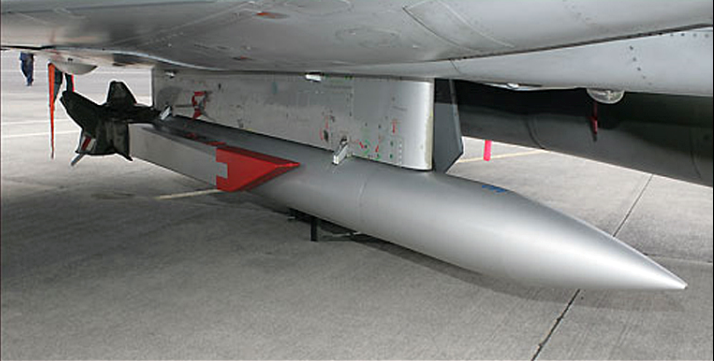
The flight of the rocket on the march segment takes place at a high supersonic speed 3-4М. For following the route and aiming at the target digital maps of the terrain are used, this information is entered into the guidance system directly in the course of preparation for combat use. Shortly before hitting the target, the rocket is reduced to a height of 30-40 meters, while its flight speed is 2M.
The only carriers of ASMP-A cruise missiles are the Rafale F3 and Rafale-M F3 aircraft. They are gradually replacing the Mirage 2000N and Super Etandar bombers. In 2008, it was decided to reduce the number of aircraft carrying nuclear weapons to 40 units. More than 50 nuclear warheads for ASMP-A missiles are allocated for them.
At present, the main carriers of French strategic nuclear weapons are still SSBNs of the Triumphant type. Due to their small number, the intensity of combat patrols is very high. Patrols are usually conducted in the North Atlantic, in the Barents or Norwegian Seas. Each of the French boats in the past made three patrols a year. The average duration of stay on combat patrols was about 60 days.
In peacetime, three boats are usually in a state of alert. Two boats are on duty at the piers in the base, one carries out combat patrols in the ocean. The fourth boat, as a rule, is undergoing repairs or re-equipment with the withdrawal from the composition of the forces of constant readiness. The system of operation of strategic missile carriers adopted in France makes it possible to save on shipments of missiles and nuclear warheads by using missiles of disarmed SSBNs under repair for arming boats on alert.
In service with the current group of French strategic forces are 48 SLBMs and about 300 deployed and stockpiled nuclear warheads. According to the beginning of the year 2013, in France there were 100 carriers of nuclear weapons on which 340 nuclear warheads could be deployed. The total number of available nuclear weapons did not exceed 360 units. This puts France in fourth place in terms of the number of nuclear warheads in service, after Russia, the United States and China.
Officially, the production of fissionable materials for the production of new nuclear warheads in France was discontinued at the end of 90's. However, it is known that during the years of work at two large radiochemical enterprises on the Cape La Hague (UP2 and UP3) a huge amount of plutonium was produced and accumulated. In total, about 77% of electricity in France is generated at nuclear power plants. France possesses world leadership in the share of nuclear energy in the country's energy balance, being also the world's largest exporter of electricity. 58 industrial nuclear reactors with a total capacity of 63 GW are in operation in the country. Annually, more than 12000 tons of uranium dioxide concentrate are purchased for enrichment and transformation into nuclear fuel in Canada, Nigeria, Russia and Kazakhstan.
The product of reprocessing spent nuclear fuel during the generation of electricity is plutonium. In addition to its own spent nuclear fuel, enterprises of the French company Kogema are processing and enriching fuel cells supplied from nuclear power plants in Germany, the Netherlands, Japan, Belgium and Switzerland. The amount of spent fuel received for reprocessing is about 1200 tons per year. Plutonium recovered from spent fuel is stored at the company's facilities. In the future, it is planned to use it in fuel cells when generating electricity in promising new type reactors. But accumulated plutonium can also be used to assemble new nuclear charges, its quantity is sufficient to create approximately 1000 nuclear warheads, which is comparable to the strategic nuclear arsenals of Russia and the United States.
Based on:
http://ieer.org/article/energy-security/international-civilian-reprocessing/
http://ria.ru/spravka/20110912/436132645.html
http://www-dam.cea.fr/dossiers/Sahara/essai_atmo.html
http://astro-notes.org/archives.htm
http://www.yabloko.ru/Publ/Atom/atom00203g.html
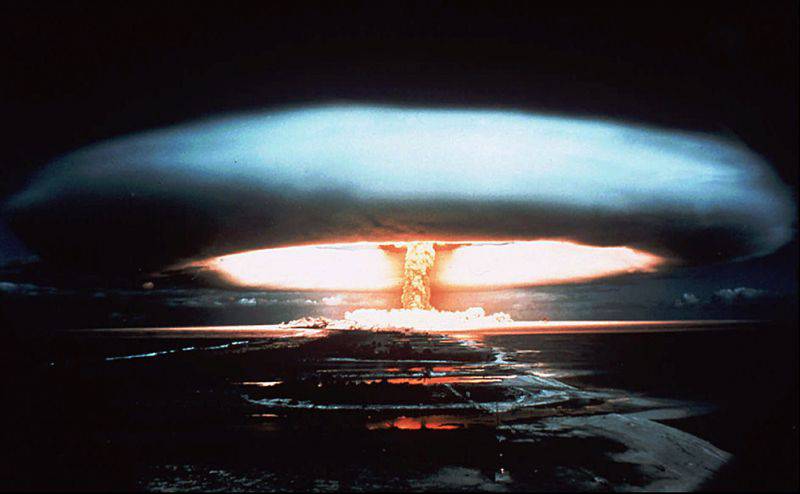
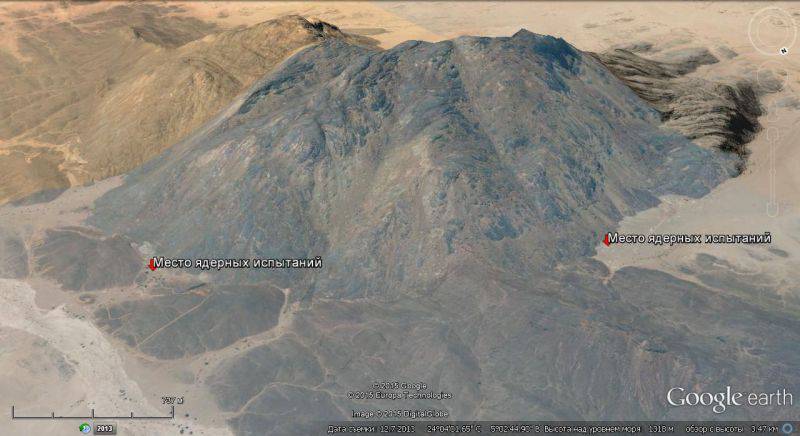

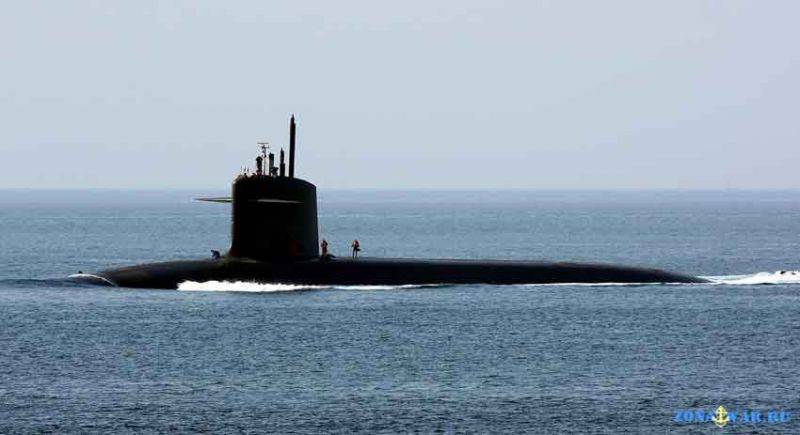
Information